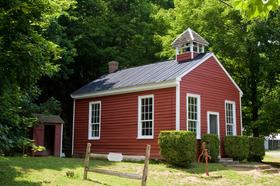For the 2025 school year, there are 3 public schools serving 4,881 students in the neighborhood of Wolf Creek, Temecula, CA.
The neighborhood of Wolf Creek, Temecula, CA public schools have a diversity score of 0.72, which is more than the California public school average of 0.63.
Minority enrollment is 62% of the student body (majority Hispanic), which is less than the California public school average of 80% (majority Hispanic).
Best ÎÛÎÛÂþ» Schools in the neighborhood of Wolf Creek, Temecula, CA (2025)
School
(Math and Reading Proficiency)
(Math and Reading Proficiency)
Location
Grades
Students
Rank: #11.
Great Oak High School
(Math: 53% | Reading: 80%)
Rank:
Rank:
9/
Top 20%10
32555 Deer Hollow Way
Temecula, CA 92592
(951) 294-6450
Temecula, CA 92592
(951) 294-6450
Grades: 9-12
| 3,007 students
Rank: #22.
Erle Stanley Gardner Middle School
(Math: 49% | Reading: 68%)
Rank:
Rank:
9/
Top 20%10
45125 Via Del Coronado
Temecula, CA 92592
(951) 699-0080
Temecula, CA 92592
(951) 699-0080
Grades: 6-8
| 1,069 students
Rank: #33.
Temecula Luiseno Elementary School
(Math: 47% | Reading: 62%)
Rank:
Rank:
8/
Top 30%10
45754 Wolf Creek Dr. North
Temecula, CA 92592
(951) 294-6340
Temecula, CA 92592
(951) 294-6340
Grades: K-5
| 783 students
Frequently Asked Questions
What are the top ranked public schools in the neighborhood of Wolf Creek, Temecula, CA?
The top ranked public schools in the neighborhood of Wolf Creek, Temecula, CA include Great Oak High School, Erle Stanley Gardner Middle School and Temecula Luiseno Elementary School.
How many public schools are located in the neighborhood of Wolf Creek, Temecula?
3 public schools are located in the neighborhood of Wolf Creek, Temecula.
What is the racial composition of students in the neighborhood of Wolf Creek, Temecula?
the neighborhood of Wolf Creek, Temecula public schools minority enrollment is 62% of the student body (majority Hispanic), which is less than the California public schools average of 80% (majority Hispanic).
Recent Articles

Segregation in K-12 Education: Colonial Era
Explore the origins of educational segregation during the colonial era and the differential treatment of Native American, African American, and white students. This article delves into the historical context, policies, and societal attitudes that shaped early education in colonial America, highlighting the disparities and injustices that persisted within the schooling systems of that time.

2011 Classroom Size Update: Are Classes Still Growing Larger?
Since the recession, public school classrooms have seen major budget cuts - and many increases in class sizes. How is the situation in 2011? Read this article to find out.

Will Single Sex Classrooms Save ÎÛÎÛÂþ» Schools?
Learn about the benefits of single sex classrooms and why public schools are hoping this type of classroom will save the American school system.
